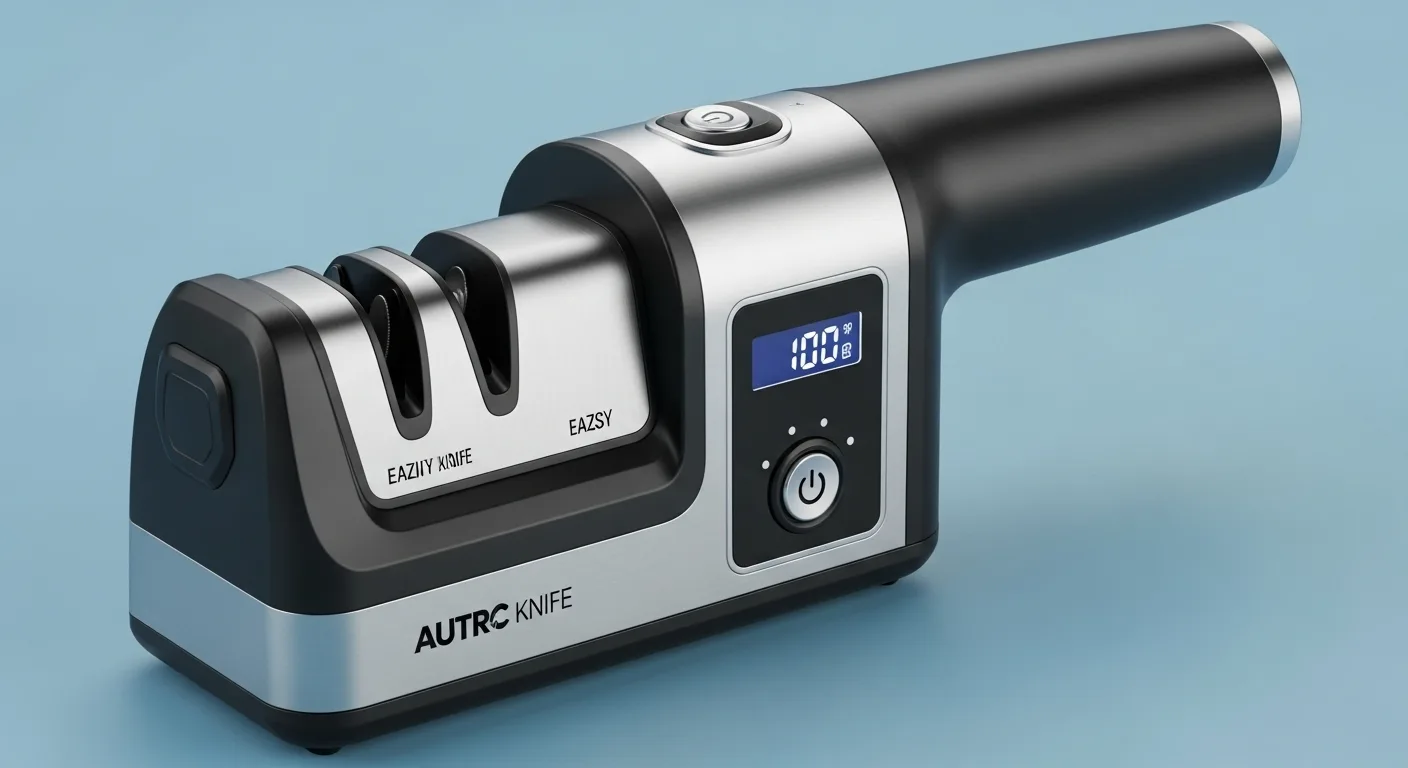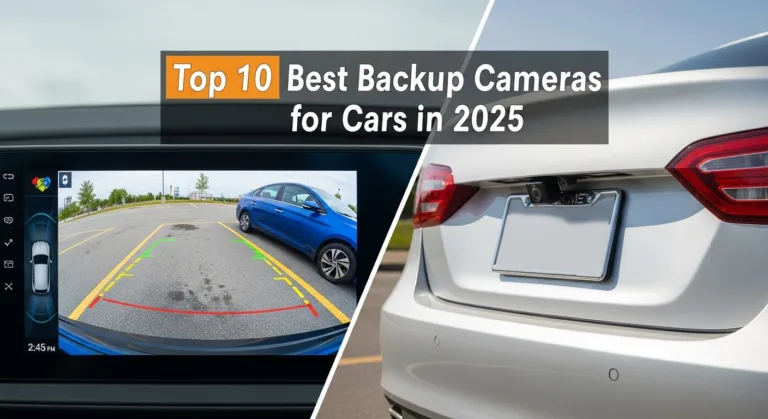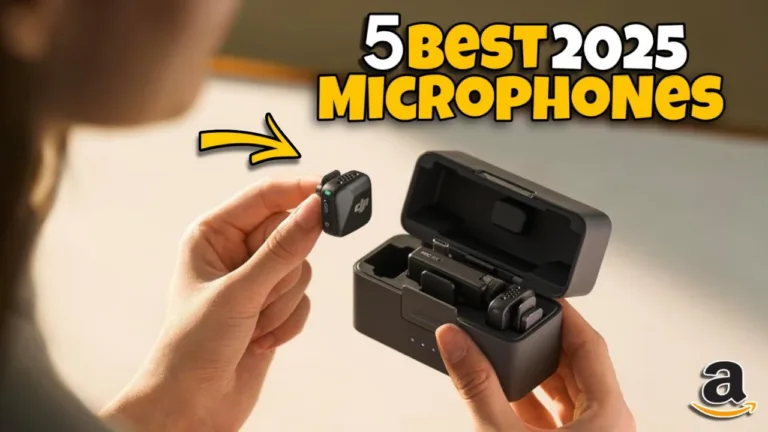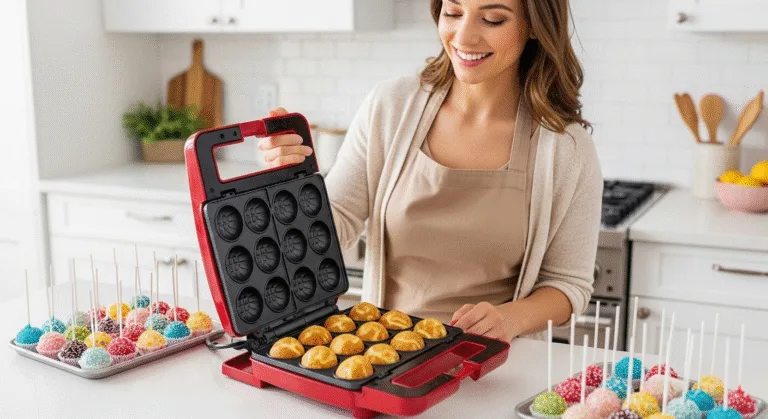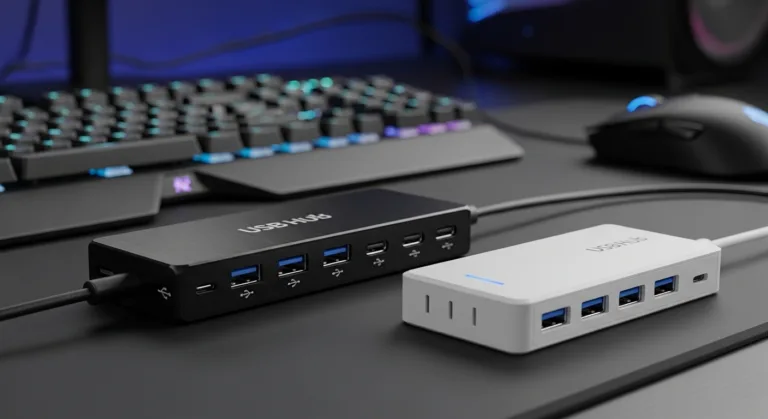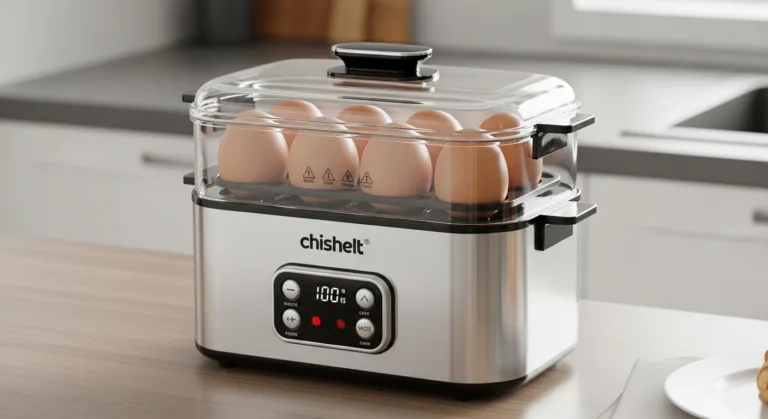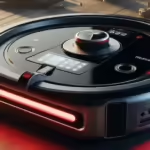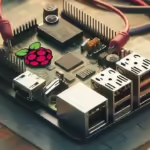Revive Your Blades & Perfect Your Cut: Why an Electric Knife Sharpener (and a Great Knife!) is a Kitchen Game-Changer
Hello, fellow food enthusiasts and home cooks! It’s your trusted reviewer, and today we’re diving deep into the tools that are the heart of any efficient kitchen: sharp knives and the means to keep them that way. We’ve all been there – wrestling with a dull knife, squashing tomatoes instead of slicing them, and feeling that pang of frustration. A sharp knife isn’t just a convenience; it’s a cornerstone of safe, efficient, and enjoyable cooking. And what good is an excellent sharpener without a worthy blade?
While manual sharpeners have their place, electric knife sharpeners offer speed, precision, and ease of use that are hard to beat. Today, we’re taking a comprehensive look at ten outstanding electric knife sharpeners and essential kitchen tools that will elevate your culinary game. We’ll break down features, performance, and who they’re best suited for. Say goodbye to dull blades and hello to effortless cutting!
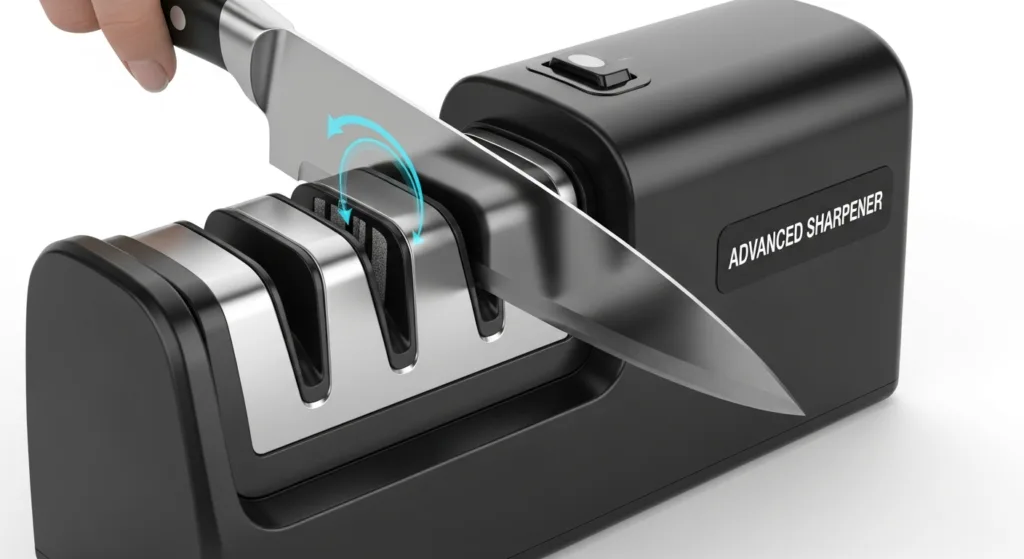
Top Electric Knife Sharpeners & A Notable Knife Reviewed
Let’s get straight into the contenders that promise to bring your knives back to their former glory, plus a look at a knife that deserves such treatment.
1. Presto 08800 EverSharp Electric Knife Sharpener
A Budget-Friendly Workhorse for Everyday Blades

Key Features & Specifications:
- Sharpening System: 2-stage (Reshaping/Angle Creation & Honing/Polishing).
- Abrasives: Sapphirite™ sharpening wheels.
- Knife Compatibility: Non-serrated kitchen and sport knives.
- Blade Guides: Precision guides for the ideal angle.
- Voltage: 120 Volts.
First up is the Presto 08800 EverSharp, a popular choice for those seeking an affordable and straightforward solution to dull kitchen and sports knives.
Performance and Ease of Use: Simple, quick, and economical. Great for beginners.
Who is it for? Home cooks need a simple, budget-friendly sharpener for everyday knives.
Pros
- Easy to use, affordable, and reliable for non-serrated knives.
Cons
- Not for serrated knives, may not suit very high-end steels.
2. Chef’sChoice EdgeSelect Model 15XV Electric Knife Sharpener
The Angle Converter: Perfect for Asian and European Knives

Key Features & Specifications:
- Sharpening System: Advanced 3-stage EdgeSelect® (Diamond abrasives for beveling, finer diamonds for shaping, flexible stropping/polishing).
- Abrasives: 100% diamond abrasives (Stages 1 & 2), flexible abrasives (Stage 3).
- Angle Conversion: Converts 20° to 15° Trizor XV® edges.
- Knife Compatibility: Straight-edge and serrated knives (kitchen, household, sporting, and pocket knives).
- Blade Guides: Patented flexible spring guides.
- Housing: Brushed metal upper housing.
- Noise Level: 65-75 decibels.
- Dimensions: Approx. 10″ W x 4.25″ D x 4.25″ H.
- Sharpening Time: ~1 min (first time); ~10 sec (resharpen).
Chef’sChoice Model 15XV EdgeSelect is a standout, particularly for converting 20-degree edges to a finer 15-degree Trizor XV® edge, making it versatile for European and Asian-style knives. This model’s capabilities were highlighted extensively in our source for good reason.
Performance and Ease of Use: A powerhouse for angle conversion and achieving super-sharp edges on various knives.
Who is it for? Serious cooks with diverse knife preferences seeking high-performance 15° edges.
Pros
- Converts to a 15° edge, ideal for straight and serrated knives, diamond abrasives, and durability.
Cons
- Noisy, higher price point.
3. Vidome Professional Electric Knife Sharpener
Sleek Design with Versatile Diamond Sharpening

Key Features & Specifications:
- Sharpening System: 3-stage (Coarse 360# Diamond, Fine 600# Diamond, Polish 1000# Resin).
- Abrasives: 100% Diamond (Stages 1 & 2), Resin (Stage 3).
- Knife Compatibility: Compatible with metal and ceramic knives.
- Angle Technology: Applies to and converts to a 15° edge.
- Motor: German imported.
- Noise Level: 60-80 dB.
The Vidome Professional offers a stylish look with a 3-stage system for various knife types, including ceramic.
Pros
- Sharpens metal and ceramic, 100% diamond, converts to a 15° edge, and features magnetic chip collection.
Cons
- Can be loud (up to 80 dB).
Performance and Ease of Use: Aesthetically pleasing and functional, suitable for ceramic blades and 15-degree conversions. Magnetic chip collection is a plus.
Who is it for? Cooks needing versatility for various knife types (including ceramic) and appreciating modern design.
4. Homly Professional Electric Knife Sharpeners
Focused on Diamond Abrasives and User-Friendly Design

Key Features & Specifications:
- Sharpening System: 3-stage (100% diamond for Stages 1 & 2, Polish for Stage 3).
- Abrasives: Proprietary diamond abrasives.
- Knife Compatibility: A Wide range of straight-edged knives.
- Design: Double-layer protection, designed to reduce noise. Flexible spring guide rod.
The Homly Professional Electric Knife Sharpener emphasizes a multi-stage system with diamond abrasives for consistent, sharp edges.
Performance and Ease of Use: Aims for durable diamond sharpening with reduced noise. The 3-stage system is standard for refined edges.
Who is it for? Users seeking a reliable, diamond-based sharpener for standard kitchen knives who value aesthetics and potentially quieter operation.
Pros
- Uses 100% diamond abrasives, suitable for many straight-edged knives, and designed for reduced noise.
Cons
- Serrated knife sharpening capabilities are less clear.
5. WÜSTHOF Classic IKON 8-Inch Chef’s Knife
The Perfect Blade Deserving of a Great Sharpener

Key Features & Specifications:
- Type: Chef’s Knife, 8 inches.
- Construction: Forged high-carbon stainless steel.
- Hardness: 58° HRC.
- Edge Technology: Precision Edge Technology (PEtec) for 20% sharper blade, twice the edge retention.
- Handle: Durable synthetic, featuring a double-bolster design for balance and beauty.
- Origin: German-made.
A high-quality knife like the WÜSTHOF Classic IKON truly shines when impeccably sharp, making a reliable electric sharpener essential.
Performance and Design: Exceptional balance and an incredibly sharp, durable edge. The double bolster adds to its professional feel and safety.
Who is it for? Serious home cooks and professional chefs demand top performance and durability.
Pros
- Exceptional sharpness/edge retention, perfectly balanced, durable ergonomic handle, forged construction.
Cons
- Premium price, requires proper sharpening.
6. Enutogo 2-Stage Electric Knife Sharpener
Compact and Simple for Basic Sharpening Needs

Key Features & Specifications:
- Sharpening System: 2-stage (Coarse 360# Diamond, Fine 600# Diamond).
- Abrasives: Diamond.
- Angle: 20-degree edge.
- Knife Compatibility: Straight blade knives (chef, slicing, Santoku, paring, pocket, ceramic). Not for shears/scissors.
- Design: Magnetic dust box.
The Enutogo 2-Stage Electric Knife Sharpener is a home-use device for quick and easy sharpening to a 20-degree edge.
Performance and Ease of Use: Simple two-stage diamond system. Practical magnetic dust box.
Who is it for? Cooks needing basic, easy sharpening for straight-edged knives (including ceramic) at a 20-degree angle.
Pros
- Simple operation, diamond abrasives, suitable for straight-edged knives (including ceramic), with a magnetic dust box.
Cons
- Only 20° edge, not for serrated or shears.
7. Chef’sChoice Model 130 Electric Knife Sharpener
Professional Grade Sharpening for Diverse Edge Needs

Key Features & Specifications:
- Sharpening System: 3-stage (Stage 1: Diamond, Stage 2: Steeling/Micro-serration, Stage 3: Flexible stropping/Polishing).
- Abrasives: 100% diamond (Stage 1), specialized steel (Stage 2), flexible stropping (Stage 3).
- Knife Compatibility: All 20-degree knives (straight and serrated).
- Edge Type: Creates an arch-shaped edge; options include micro-serrated or polished finish.
The Chef’sChoice Model 130 is a compact 3-stage electric sharpener offering versatility for 20-degree knives, including straight and serrated edges.
Performance and Ease of Use: Offers edge finish options. Diamond abrasives ensure effective sharpening. The steeling stage is unique for a toothier edge or serrated blades.
Who is it for? Users with 20-degree knives (including serrated) who appreciate edge finish options.
Pros
- Versatile 3-stage for different finishes, excellent for straight/serrated 20° knives, diamond abrasives.
Cons
- Only for 20-degree class knives.
8. Presto 08810 Professional Electric Knife Sharpener
Versatile 3-Stage Sharpening with Blade Thickness Selector

Key Features & Specifications:
- Sharpening System: 3-stage (Stage 1 & 2: Sapphirite™ Coarse/Medium Grinding; Stage 3: Extra-fine Ceramic Honing).
- Abrasives: Sapphirite™ grinding wheels, extra-fine grit ceramic wheel.
- Blade Thickness Selector: Adjusts guides for Thick, Medium, or Thin blades.
- Knife Compatibility: Kitchen and sport knives, including Santoku.
The Presto 08810 features a 3-stage system and an innovative blade thickness selector, enabling it to accommodate a broader range of knives.
- Sharpening System: 3-stage (Stage 1 & 2: Sapphirite™ Coarse/Medium Grinding; Stage 3: Extra-fine Ceramic Honing).
- Abrasives: Sapphirite™ grinding wheels, extra-fine grit ceramic wheel.
- Blade Thickness Selector: Adjusts guides for Thick, Medium, or Thin blades.
- Knife Compatibility: Kitchen and sport knives, including Santoku.
Performance and Ease of Use: The blade thickness selector enables customized sharpening, with a smooth progression from coarse to fine.
Who is it for? Cooks who work with diverse knife thicknesses require adaptable, precise sharpening.
Pros
- Blade thickness selector, versatile 3-stage system, sharpens various knives, and is easy to use.
Cons
- No explicit angle conversion.
9. Work Sharp Electric Kitchen Knife Sharpener E2
Compact, Guided, and Gentle Sharpening

Key Features & Specifications:
- Sharpening System: Fully guided, automates the sharpening process: premium abrasives and built-in ceramic honing wheel.
- Knife Compatibility: All kitchen knives, including those with serrated edges, as well as scissors and shears.
- Ease of Use: “Push of a button,” fully guided.
- Warranty: 3-year.
The Work Sharp E2 is designed for simple, effective, and gentle sharpening for various kitchen tools.
Performance and Ease of Use: Emphasizes ease with a guided system, gentle on knives. Versatile for various cutting tools.
Who is it for? Busy cooks want simple, reliable, versatile, and gentle sharpening for all kitchen cutting tools.
Pros
- Very easy to use, sharpens knives, serrated blades, scissors, and shears, with gentle honing and a built-in ceramic system, backed by a 3-year warranty.
Cons
- Abrasive details are less prominent, may not offer advanced edge customization.
Frequently Asked Questions (FAQ)
How often should I sharpen my knives with an electric sharpener?
This depends on how often you use your knives and what you’re cutting. For a home cook, a full sharpening session may only be needed every few months or even once or twice a year, especially if you regularly hone your knives (see Q3). Over-sharpening can wear down your blade unnecessarily. Please pay attention to your knife’s performance; when it starts to struggle with tasks it used to handle easily (like slicing through a tomato skin), it’s probably time for a sharpening. Many electric sharpeners also have a honing or polishing stage, which can be used more frequently (even weekly) to maintain the edge between full sharpening sessions.
Q2: Can electric knife sharpeners damage my knives?
If misused, any sharpening method can potentially damage a knife. However, modern electric knife sharpeners, especially those with precise angle guides and multiple stages, are designed to be safe and effective. The key is to follow the manufacturer’s instructions carefully. Avoid applying excessive pressure – let the sharpener do the work. High-quality sharpeners remove only a minimal amount of metal to restore the edge. Models that are “gentle” or use finer abrasives in later stages are particularly good at minimizing metal removal.
What’s the difference between sharpening and honing?
This is a crucial distinction!
Sharpening removes a small amount of steel from the blade to create a new, sharp edge. This is what you do when your knife is genuinely dull.
Honing (often done with a honing steel or a fine ceramic stone on an electric sharpener) realigns the existing microscopic edge of the knife. Daily use can cause this fine edge to bend or roll over slightly. Honing straightens it back out, maintaining sharpness without removing significant metal.
You sharpen less frequently, but hone regularly.
Are electric sharpeners better than manual ones (like whetstones or pull-throughs)?
“Better” is subjective and depends on your needs and preferences.
Electric Sharpeners: Offer speed, convenience, and consistency (thanks to angle guides). They are generally easier for beginners to get good results with quickly.
Manual Whetstones: Offer the most control and can produce incredibly refined edges, but they have a steeper learning curve and require more time and skill.
Manual Pull-Throughs: These can be convenient for quick touch-ups, but some less expensive models may lack precise angle control and can sometimes be overly aggressive.
For most home cooks who want sharp knives without a lot of fuss or time spent learning, a good electric sharpener is often an excellent choice.
Can I sharpen serrated knives with any electric sharpener?
No, not all electric sharpeners are designed for serrated knives. Sharpening serrated blades requires a tool that can get into the “gullets” (the curved indentations) without damaging the points. Look for electric sharpeners that specifically state they can sharpen serrated knives. These often use flexible stropping/polishing disks or specialized guides (like the Chef’s Choice 15XV, Chef’s Choice 130, or Work Sharp E2 mentioned in our reviews). Always check the manufacturer’s specifications.
How long does it take to sharpen a knife with an electric sharpener?
This varies by model and the dullness of the knife. For a first-time sharpening or re-profiling of a very dull knife, it may take a minute or two (e.g., the Chef’sChoice 15XV). For resharpening a reasonably well-maintained knife, the process can be as quick as 10-30 seconds per knife. The key is to make a few consistent passes per stage, as instructed.
Is it challenging to use an electric knife sharpener?
Generally, no. Most electric knife sharpeners are designed to be very user-friendly. The built-in angle guides are the most significant help, eliminating most of the guesswork from the process. You typically need to draw the knife through the designated slots gently. As always, reading the instruction manual for your specific model is the best way to ensure you’re using it correctly and safely.
What are diamond abrasives, and why are they suitable for sharpening?
Diamond is the hardest natural substance on Earth. When used as an abrasive in knife sharpeners, diamond particles can effectively grind and sharpen even the hardest knife steels, including modern “super steels” and ceramic knives, relatively quickly. They also last a long time. That’s why many high-quality electric sharpeners feature diamond abrasives, at least in their initial (coarser) sharpening stages.
Some sharpeners mention a “convex edge.” What is that, and why is it beneficial?
Most factory knife edges are flat V-grinds. A convex edge, such as those often produced by flexible belt sharpeners (like some Work Sharp models), has a slight outward curve from the spine to the very tip of the edge. This geometry is considered by many to be stronger and more durable than a flat V-grind because there’s more metal supporting the excellent cutting edge. This can lead to better edge retention and resistance to chipping.
How do I clean an electric knife sharpener?
Cleaning is usually quite simple. Most of the metal filings (swarf) produced during sharpening are contained within the machine. Many models, like the Vidome and Enutogo, feature magnetic collection trays or dust boxes that can be easily removed and emptied. For the exterior, a wipe-down with a damp cloth is usually sufficient. Avoid using water directly inside the sharpening slots or on electrical components. Always refer to your sharpener’s manual for specific cleaning instructions.
